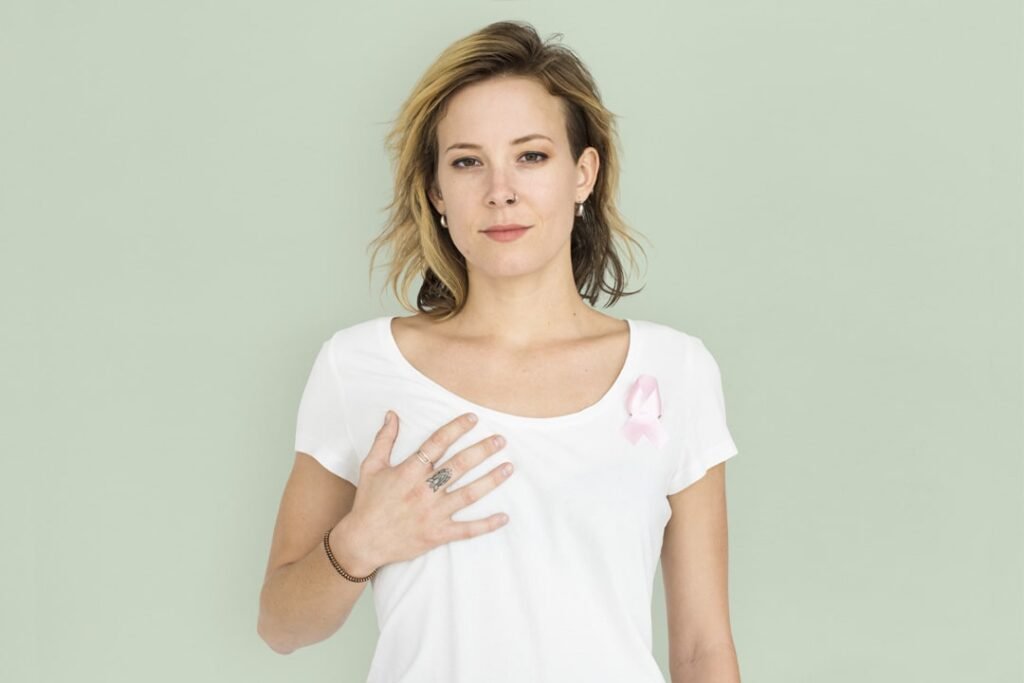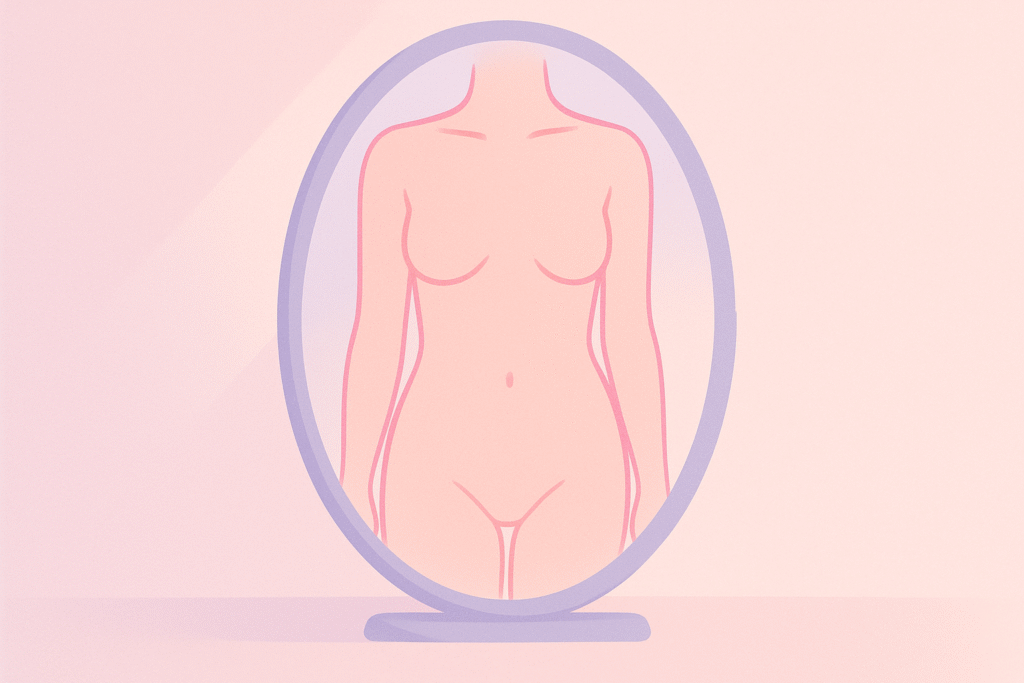Intro
Self-exams help you get familiar with your body so you can notice new or persistent changes. They do not diagnose cancer and do not replace screening. Use this calm, monthly routine and talk to a healthcare professional about any changes or questions, and about the right screening plan for your region and personal risk.
What a self-exam is—and is not

A self-exam builds body awareness so you can spot changes early. It doesn’t confirm what a change means, and it doesn’t replace screening tests recommended for your age and risk profile. Think of it as a supportive habit alongside professional care.
When to do it (timing)
Choose one consistent day each month. If you menstruate, aim for a few days after your period when breasts are often less tender. If you don’t menstruate, pick an easy-to-remember date (e.g., the 1st) and stick to it.
What you’ll need
Good lighting, a mirror, and optionally a small amount of lotion or soap to help fingers glide smoothly during the check.
Step-by-step: the routine

- Look (arms at sides). In a mirror, notice your usual shape, skin, and nipples.
- Look (arms raised, then hands on hips). Watch for dimpling, puckering, pulling, or a change in size/shape/position.
- Check while standing or in the shower. Use the pads of three fingers, moving in small circles with light → medium → firm pressure. Choose one pattern and cover the entire breast:
- Circular pattern: from the nipple outward in widening circles.
- Vertical strip: up-and-down lines from the collarbone to beneath the breast.
- Wedge pattern: from the outer edge toward the nipple in “slices.”
Include the upper outer area toward the armpit and the area up to the collarbone.
- Check while lying down. Place a small pillow under the shoulder on the side you’re checking; arm behind your head. Repeat the same pattern and pressure levels to cover all tissue.
- Nipple and areola. Gently check the area around the areola. Note any discharge (not related to breastfeeding), new inversion, scaling, or crusting.
- What to note. A new lump or thickening, a lump that doesn’t move the way surrounding tissue does, persistent focal pain, skin changes (dimpling, redness, orange-peel texture), nipple changes, or swelling.
What to look for during a self-exam
- New lump or thickening that feels different from surrounding tissue.
- Change in size or shape of one breast (new asymmetry that’s unusual for you).
- Skin changes: dimpling, puckering, redness, warmth, or “orange-peel” texture.
- Nipple changes: new inversion, scaling/crusting, or a position shift.
- Nipple discharge not related to breastfeeding (especially bloody or clear and persistent).
- Focal, persistent pain in one spot that doesn’t go away across your cycle.
- Swelling or fullness in the breast, collarbone area, or armpit (axilla).
- Area that feels different (harder/denser) or doesn’t move like nearby tissue.
- Skin sores or non-healing areas on the breast or nipple.
These signs don’t equal a diagnosis. If a change is new, worsening, or persistent, contact a clinician. Self-exam supports awareness and does not replace screening.
What to do if you notice a change
Don’t panic—many changes are not cancer (cysts, hormonal shifts, benign conditions). Make an appointment with a clinician, especially if the change persists, grows, or simply worries you. Jot down when you first noticed it, whether it changes across your cycle, and any other symptoms.
(html: callout — “When to seek care”)
Accessibility & inclusivity notes
- After surgery or with implants: Ask your care team for exam adjustments tailored to your body; scars or reconstruction can change how tissue feels.
- During treatment or post-treatment: Your care team may suggest a modified pattern—follow their guidance.
- Men, trans, and non-binary people: Anyone can develop breast tissue changes; learn your baseline and speak with a clinician about screening relevant to you.
Self-exam vs screening (what’s the difference?)
Self-exam supports awareness, while screening (e.g., mammography or other tests recommended in your region) is designed to detect issues earlier—even before you can feel them. Follow official screening guidance for your country and your personal risk plan.
(html: callout — “Follow your region’s screening guidance”)
Gentle support & next steps
Pair the habit with care: comfortable clothing, soft fabrics, and a calm, pressure-free mindset. If you’re supporting someone else, ask what helps, respect boundaries, and share trusted resources rather than unsolicited advice.
🩷 Read next:
- Pink October Hub →
- Breast Cancer Risk Factors →
- Supportive Living After Treatment →
FAQs
Once a month at a consistent time; if you menstruate, a few days after your period ends is often most comfortable.
A new lump or thickening, shape/size changes, dimpling, redness, orange-peel skin, nipple inversion or discharge, swelling, or persistent focal pain.
No. It’s a helpful awareness habit but not a replacement for screening recommendations in your region.
Most lumps are benign, but you should contact a clinician—especially if a change persists, grows, or concerns you.
Yes. Although breast cancer is less common in men, awareness of new changes and timely evaluation is still important.
Compliance note
This guide is informational, not medical advice. Always follow your local screening guidance and speak with a qualified healthcare professional about personal risk or any changes you notice.







